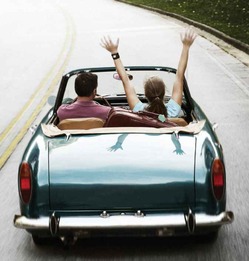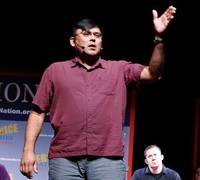 Since childhood, Gordon Sayre has been a car fanatic, a devotion that later in life has manifested itself as a rusty 1962 Volvo V1800 occupying his garage.
Since childhood, Gordon Sayre has been a car fanatic, a devotion that later in life has manifested itself as a rusty 1962 Volvo V1800 occupying his garage.
“It requires a lot of expertise and tools to restore these cars, and I don’t have the time,” he said, adding wistfully, “maybe some day.”
With the rise of Critical Mass and other bicycle movements, cars are now regularly vilified for their association with greenhouse gases and global warming, and car lovers are finding the objects of their affection increasingly under assault.
That’s in part why Sayre, a professor of English, created a class on car culture, which he’ll teach for the first time this fall. He was awarded a Coleman-Guitteau Teaching Professorship through the Oregon Humanities Center, which he will use to fund the development and instruction of the class.
Sayre’s previous research has focused on eco-criticism and depictions of American Indians in literature, and while this new direction has some direct lineage to his earlier work, he admits the class was also inspired by a desire to combine work with pleasure.
Though critics of car aficionados might accuse them of brainless consumerism and fetishizing a mass-produced product, Sayre believes Americans’ relationships with their cars can be far more complex.
“We need to understand why we love cars and then we can channel that into something healthier,” he said
At the beginning of the class, students will study readings from a collection of sociologists, geographers and critical theorists who examine how America’s devotion to the car has reshaped its cities and the lives of those who drive them. Sayre also plans to use a provocative thought experiment from an anthropologist, which imagines an alien being’s first observation of life on Earth.
“The alien notes that the planet is inhabited by strange creatures called cars, which are fed, serviced and attended to by slaves that create vast open spaces for cars to get around,” he said. “The point of the exercise is to recognize that our lives are so based around cars, we rarely question it.”
Students will then study the history of the automobile in America, and the last third of the class will send them out to conduct fieldwork within car-focused subcultures—from hot rod racers to Volkswagen van enthusiasts to even the homemade hippie buses often seen trundling through Eugene.
“There are really different approaches among the collectors, restorers and modifiers; they all have their little niches,” he said.
At some car shows, the emphasis might focus on restoration, recreating the car with a historically accurate attention to detail—from the paint job to the upholstery. But at other shows, the competition might hinge on souping up vintage cars with modern engines and big racing wheels.
“It’ll be interesting to see what the students find in the field, because there are so many rules in these subcultures and sometimes they’re really rigid,” he said. “So why is that? Who decides what’s good and what’s bad?”
Through their investigations, the students will have to decide for themselves whether car culture represents an artistic and creative phenomenon or is simply a symptom of conspicuous consumerism.
“There are some researchers who compare some of this work to a modern art form, as if Jackson Pollack had chosen cars as his canvas,” Sayre said. “A Marxist would say the commodity has taken control of these people, but, for many of them, the car is a way to express themselves.”
— Marc Dadigan




 Learn how experts across disciplines are together advancing green chemistry.
Learn how experts across disciplines are together advancing green chemistry.